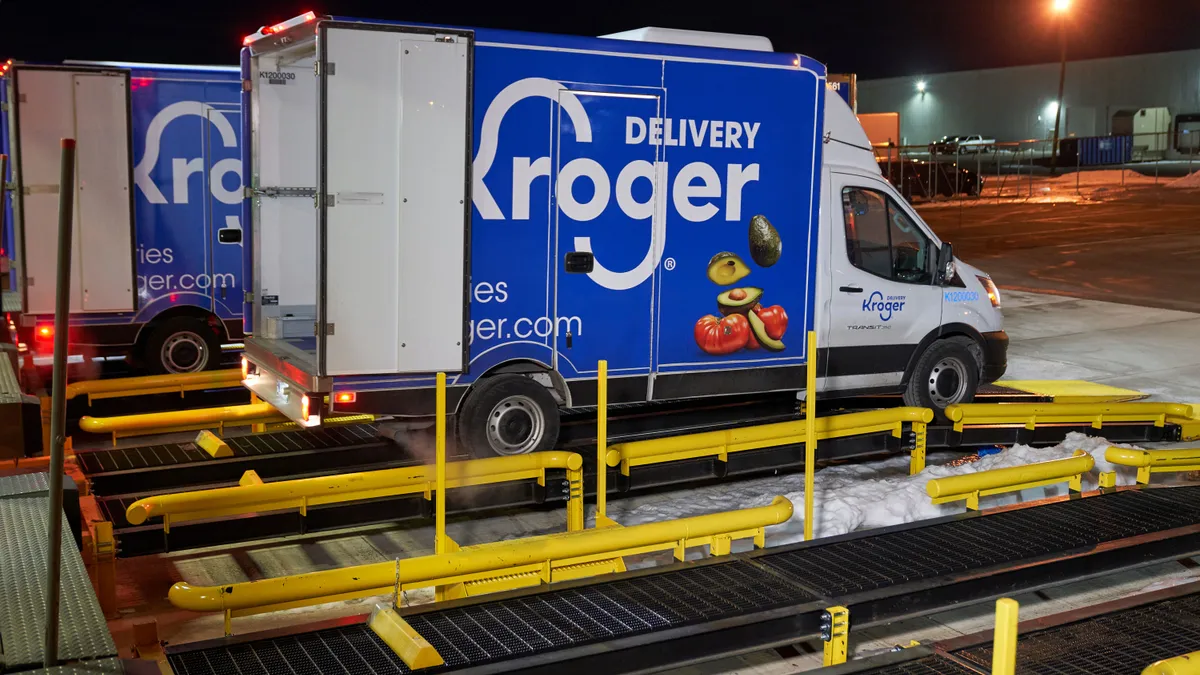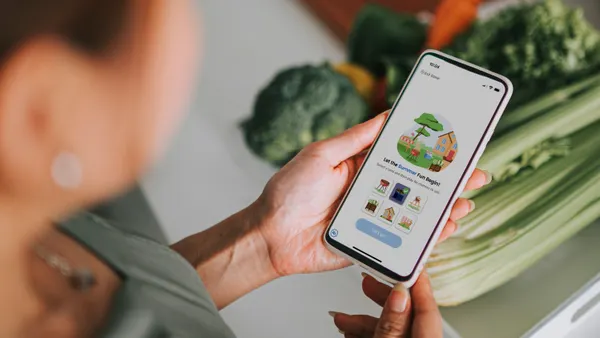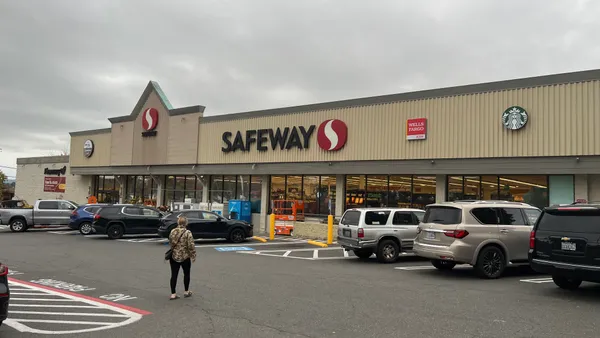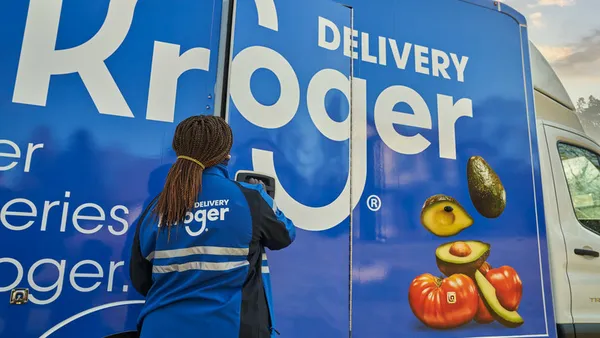Dive Brief:
- Kroger generated $45.2 billion in sales during the first quarter, an amount that was up 1.5% compared with the same period in 2022 but slightly below the expectations of analysts polled by Bloomberg.
- The grocer’s identical-store sales excluding fuel rose 3.5% in Q1 compared with 4.1% during the same period in 2022, while adjusted earnings per share came in at $1.51, up from $1.45 a year ago.
- Kroger noted that its decision last year to sever ties with pharmacy benefits manager Express Scripts depressed its Q1 same-store sales, which the grocer said would otherwise have grown 5%.
Dive Insight:
Kroger not only made inroads with the mainstream households that comprise the biggest part of its customer base during Q1, but the company was also able to draw higher-income shoppers away from specialty retailers, Chairman and CEO Rodney McMullen said during an earnings call Thursday.
“These customers are extremely valuable because they’re building larger baskets and spending more per item,” McMullen said during the call, referring to more affluent consumers. “We see these customers buying premium [private label] lines, more fresh items and larger pack sizes, and as a result they are more profitable.”
By contrast, budget-conscious shoppers had smaller baskets and migrated to lower-priced items during the quarter, in part because of the SNAP benefit reductions that went into effect earlier this year, McMullen said. These customers “are clearly prioritizing the price at shelf over other factors such as personalized offers, convenience and quality,” he said.
Sales that involved promotions were up by almost 4 percentage points during Q1, while the number of digital coupon redemptions increased to 180 million, McMullen added.
Kroger’s private brands generated robust results during the quarter, with sales of store brand items growing 4.9%, CFO Gary Millerchip said during the call, noting that store brands usually provide margins that are 6 to 8 percentage points higher than national brands.
“Our brands are always a winner with our customers in this period of sustained high inflation. It helps our customers save money without sacrificing quality,” McMullen said. “While inflation may have been the reason for some customers trying our own brand products, the taste and quality makes the customer love these products and continue to repurchase them.”
Kroger’s online sales increased 15% during Q1, with 11% growth in pickup and 30% growth in delivery, Millerchip said.
The digital sales bump was fueled mainly by “a significant rise in both households and transactions,” McMullen said. The grocer also saw a 13% increase in digitally engaged households, McMullen said, adding that these households “are more loyal, spend nearly three times more with us and help grow our alternative profit businesses like Kroger Precision Marketing,” the company’s data-analysis unit.
Millerchip said that volumes at Kroger’s fleet of automated customer fulfillment centers (CFCs) are “growing in line with expectations,” adding that the grocer is working with robotics supplier Ocado to boost the efficiency of the facilities.
Kroger and Ocado worked to improve the cost per order at the CFC in Monroe, Ohio, over the past quarter and the grocer is now applying what it learned at other CFCs, Millerchip said. “We believe digital will continue to be an important growth driver and anticipate double-digit sales increases will continue for the remainder of 2023,” he said.
McMullen said the company’s proposed merger with Albertsons is “on track” and still expected to close in early 2024, noting that the company is working cooperatively with regulators and is “very pleased with the level of interest received thus far” from potential buyers of divested stores.













